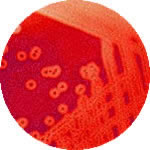S pyogenes
S pyogenes were recognized as the main bacterial pathogens in perinatal infections. In obstetrics, infection with this group of streptococci is associated with urinary tract infections, amnionitis, postpartum endometritis, bacteremia in and after childbirth, premature discharge of water and premature birth.
Epidemiology
S pyogenes are part of the normal vaginal flora and can be found in 5-35% of all pregnant women. Asymptomatic vaginal colonization occurs in approximately 20% of women (4.6 – 40%). The highest level of colonization is in women under the age of 20 years, having high sexual activity, using IUD contraception. The fact of pregnancy itself does not affect the level of colonization.
The risk of transmitting these bacteria to a newborn with infection of the mother is 42-72%, in the absence of infection, only 8%. Approximately 2/3 of infected newborns from mothers with streptococcus will be asymptomatic carriers of the infection. Despite the high level of vertical transmission, the actual frequency of clinical streptococcal infection in newborns in the first 7 days of life.
Factors predisposing to clinical forms of infection (streptococcal sepsis of newborns):
- low body weight;
- prematurity;
- clinically evident chorioamnionitis;
- intrauterine infection;
- fever in a woman in labor;
- anhydrous period of more than 12-18 hours (critical period -24 hours);
- a history of infection in the newborn in previous births.
Clinical manifestations
S pyogenes are a common cause of maternal postpartum infectious diseases: postpartum endometritis. Typical symptom is a sharp increase in body temperature in the first 12 hours after giving birth with tachycardia, chills, soreness of the uterus. Urinary tract infections are possible.
S pyogenes vaccine
The goal of future vaccination strategies could be to improve protective immunity against only those strains of beta-hemolytic streptococcus that exhibit virulence factors that lead to the development of a septic condition. It is possible that these candidates for the vaccine could be soluble pathogen proteins, naturally creating a higher immunogenicity than that produced by the polysaccharide antigens of the bacterial capsule.


